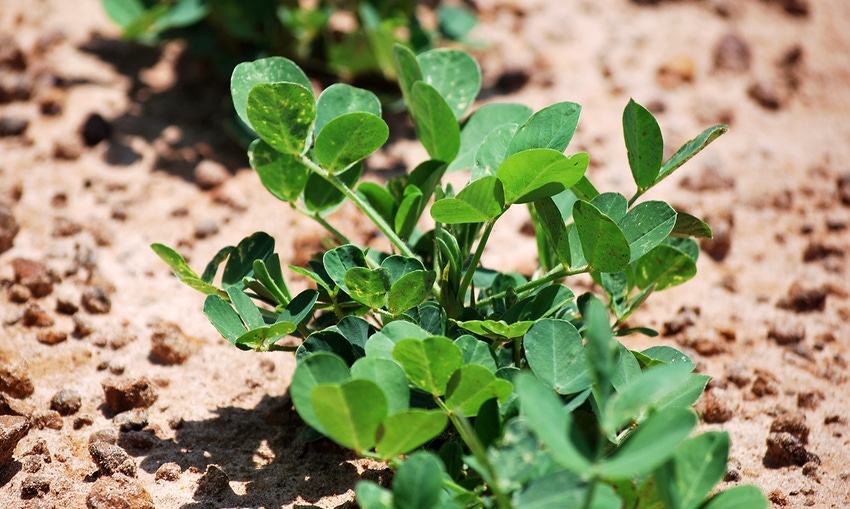
Early, severe thrips in a field opens the door to problems for peanut farmers the rest of the season. The best defense is a strong door and knowing when the thrips are knocking.
No matter the thrips management approach, peanut growers who monitor fields regularly have an advantage, said Mark Abney, University of Georgia Extension peanut entomologist. He talked about products and how peanut growers use them to manage thrips effectively.
Phorate
Phorate, or Thimet 20G, in furrow has for decades done a good job reducing thrips injury and tomato spotted wilt virus, he said. The organophosphate can cause some “Thimet burn” on peanuts. The injury doesn't cause yield loss. Growers concerned about TSWV know the risk of infection is highest in peanuts planted before May 10. “Using Thimet on early planted peanuts will provide some reduction in risk," he said.
Application in furrow at plant. The white stream directly in front of the row closers is the insecticide solution.
Imidacloprid
Imidacloprid, found in Admire Pro, Velum Total and various generics, applied as a liquid in the furrow at planting has given good control of thrips in trials at UGA and other Southeastern universities in recent years, he said. Imidacloprid works well with most liquid inoculants and fungicides but not all combinations of products have been tested. Imidacloprid will not reduce tomato spotted wilt risk. Abney tells growers to pay close attention to the product formulation they they use. Rates vary by formulation, and growers should know resistance issues with the neonicotinoid "are creeping up."
“Populations of tobacco thrips with reduced susceptibility to neonicotinoids have been documented. But not much has changed with imidacloprid in my mind. There were some fields last season, both research and commercial, where efficacy against thrips seemed to slip compared to what we have seen in the past, but overall, I do not think there were many problems. We will continue to monitor the efficacy of the neonics in 2020,” he said.
Signs of thrips injury.
Acephate
Acephate, or Orthene, foliar spray will still kill thrips, and Georgia peanut farmers use it pretty steady when at-plant insecticides “run out of steam … The problem associated with leaving off an at-plant application in favor of a foliar spray alone is timing,” he said. Scouting helps growers know when to pull the trigger with this thrips approach.
Aldicarb
The other option growers have is Aldicarb. Sold now under the tradename Ag-Logic, it's the new version of the old Temik. "It is a granular product placed in the furrow. Aldicarb does an excellent job of killing thrips and preventing feeding injury. It does not reduce the incidence of tomato spotted wilt virus in peanut," he said.
Don't skimp. “We need to be sure not to cut labeled rates in an effort to save money. Reduced rates will likely lead to reduced efficacy and can ultimately cost more in supplemental treatments or lost productivity,” he said.
About the Author(s)
You May Also Like






